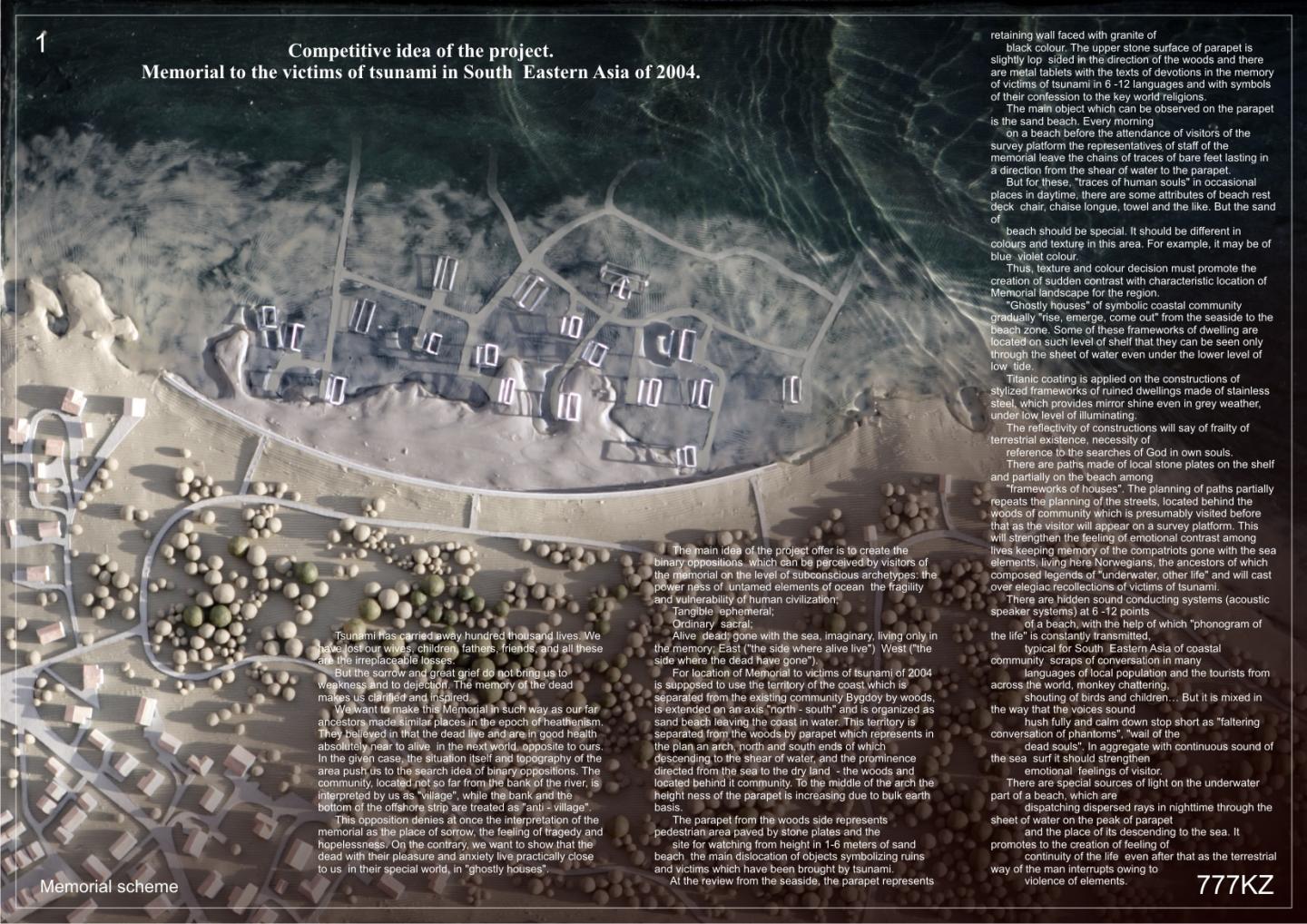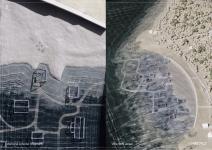Competitive idea of the project.
Memorial to the victims of tsunami in South – Eastern Asia of 2004.
Tsunami has carried away hundred thousand lives. We have lost our wives, children, fathers, friends, and all these are the irreplaceable losses.
But the sorrow and great grief do not bring us to weakness and to dejection. The memory of the dead makes us clarified and inspired.
We want to make this Memorial in such way as our far ancestors made similar places in the epoch of heathenism. They believed in that the dead live and are in good health absolutely near to alive – in the next world, opposite to ours. In the given case, the situation itself and topography of the area push us to the search idea of binary oppositions. The community, located not so far from the bank of the river, is interpreted by us as “village”, while the bank and the bottom of the offshore strip are treated as “anti - village”.
This opposition denies at once the interpretation of the memorial as the place of sorrow, the feeling of tragedy and hopelessness. On the contrary, we want to show that the dead with their pleasure and anxiety live practically close to us – in their special world, in “ghostly houses”.
The main idea of the project offer is to create the binary oppositions which can be perceived by visitors of the memorial on the level of subconscious archetypes: the power ness of untamed elements of ocean – the fragility and vulnerability of human civilization;
Tangible – ephemeral;
Ordinary – sacral;
Alive – dead; gone with the sea, imaginary, living only in the memory; East {“the side where alive live”} – West {“the side where the dead have gone”}.
For location of Memorial to victims of tsunami of 2004 is supposed to use the territory of
the coast which is separated from the existing community Bygdoy by woods, is extended on an axis “north - south” and is organized as sand beach leaving the coast in water. This territory is separated from the woods by parapet which represents in the plan an arch, north and south ends of which descending to the shear of water, and the prominence directed from the sea to the dry land - the woods and located behind it community. To the middle of the arch the height ness of the parapet is increasing due to bulk earth basis.
The parapet from the woods side represents pedestrian area paved by stone plates and the
site for watching from height in 1-6 meters of sand beach – the main dislocation of objects symbolizing ruins and victims which have been brought by tsunami.
At the review from the seaside, the parapet represents retaining wall faced with granite of
black colour. The upper stone surface of parapet is slightly lop – sided in the direction of the woods and there are metal tablets with the texts of devotions in the memory of victims of tsunami in 6 -12 languages and with symbols of their confession to the key world religions.
The main object which can be observed on the parapet is the sand beach. Every morning
on a beach before the attendance of visitors of the survey platform the representatives of staff of the memorial leave the chains of traces of bare feet lasting in a direction from the shear of water to the parapet.
But for these, “traces of human souls” in occasional places in daytime, there are some attributes of beach rest – deck – chair, chaise longue, towel and the like. But the sand of
beach should be special. It should be different in colours and texture in this area. For example, it may be of blue – violet colour.
Thus, texture and colour decision must promote the creation of sudden contrast with characteristic location of Memorial landscape for the region.
“Ghostly houses” of symbolic coastal community gradually “rise, emerge, come out” from the seaside to the beach zone. Some of these frameworks of dwelling are located on such level of shelf that they can be seen only through the sheet of water even under the lower level of low – tide.
Titanic coatin
2006




